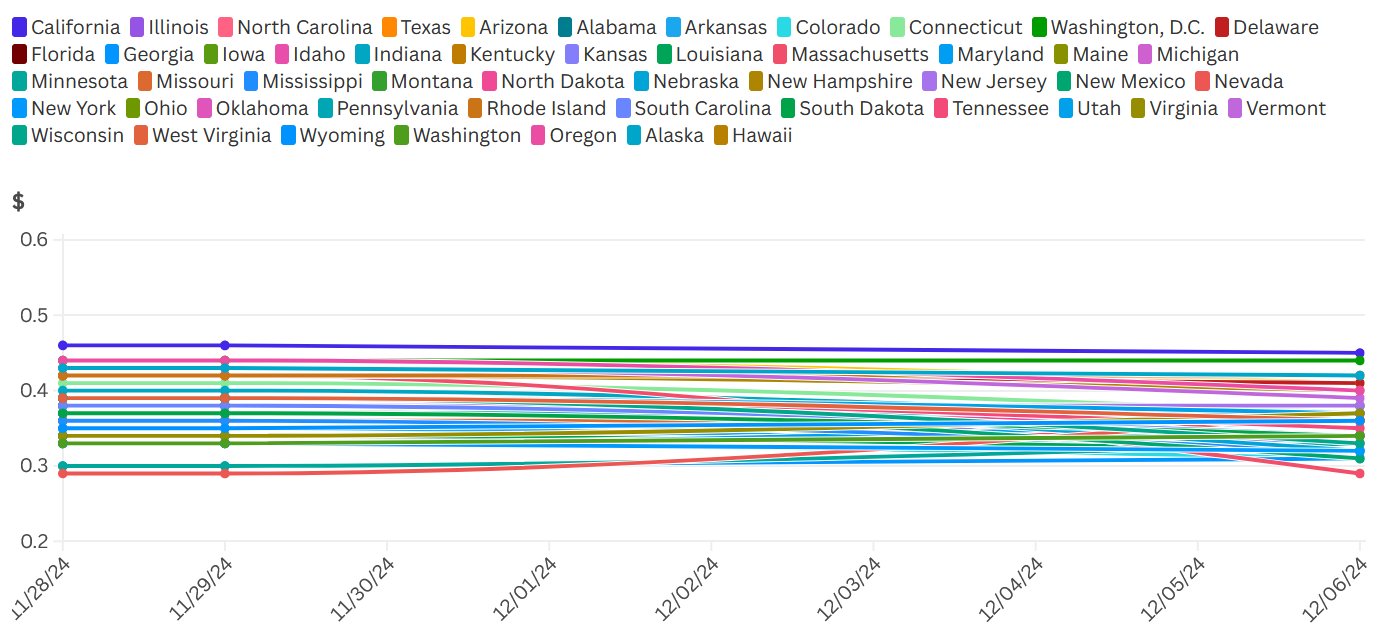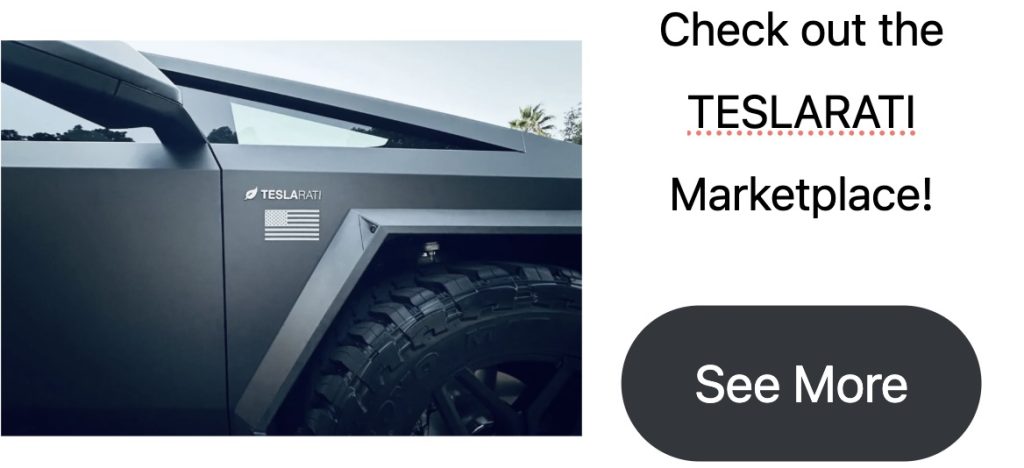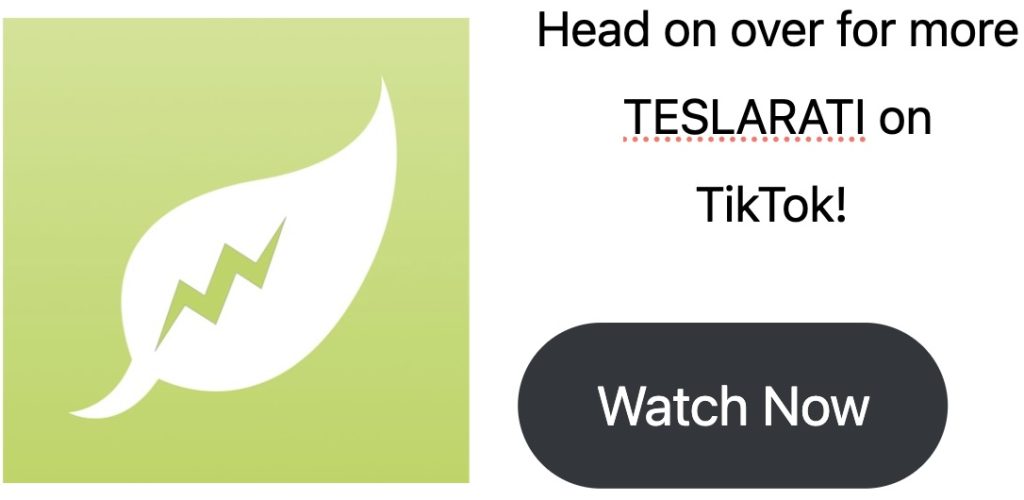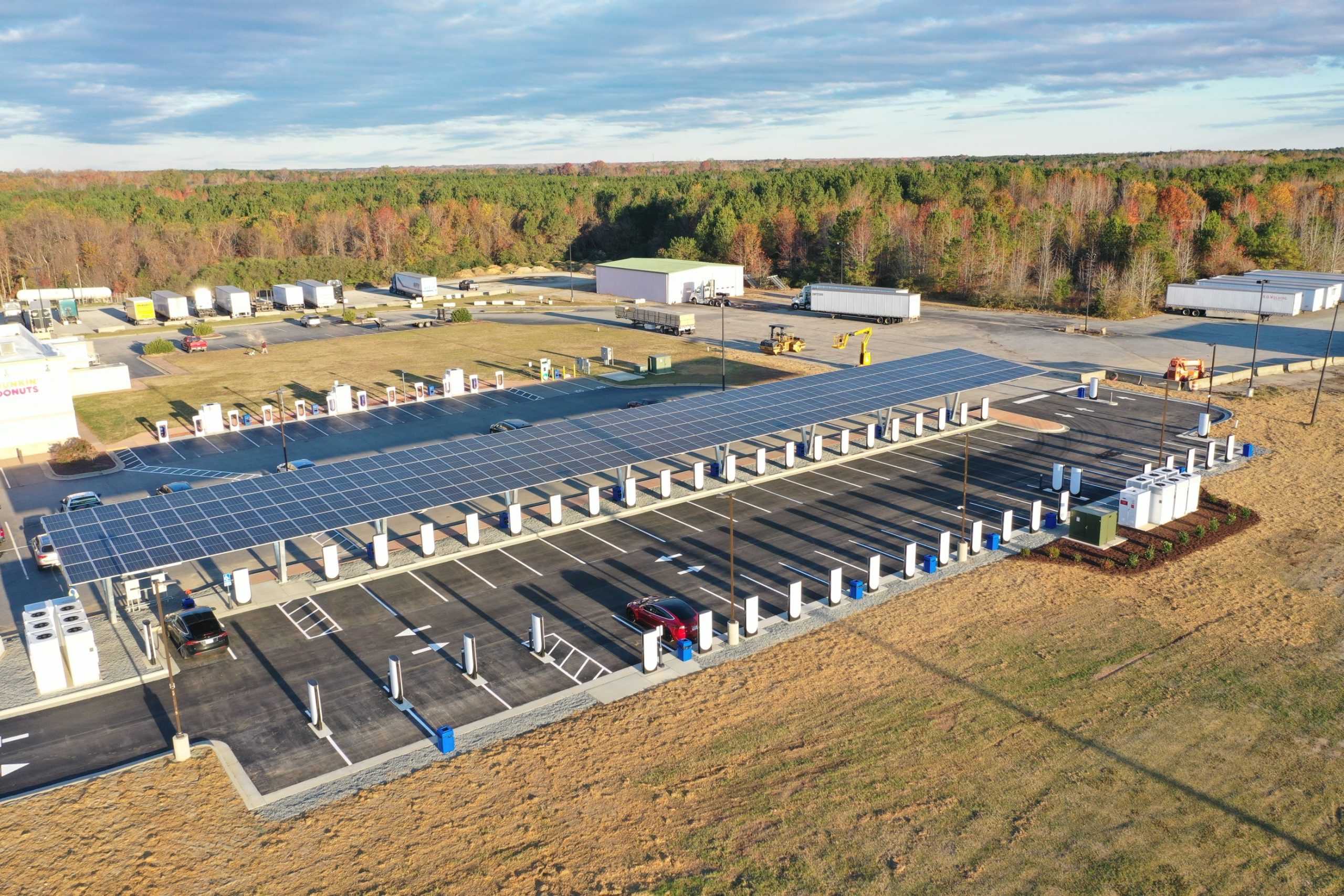Tesla’s Supercharger network hit a record single-day energy consumption the weekend after Thanksgiving, meaning that more electric vehicle (EV) drivers were able to use the chargers in one day than ever before.
The Supercharging network reached a peak single-day consumption of 12 GWh on Saturday, November 30, as confirmed over the weekend by Max de Zegher, Tesla’s Director of North American Charging, in a post on X. The news came in response to some of de Zegher’s insights on recent price reductions in the Supercharger network, and as the company has been rolling out access to the network to the first non-Tesla brands throughout this year.
Tesla Supercharger network leads U.S. toward 2030 charging goal
Tesla Supercharger pricing updates, buildout ramp, faster charging, non-Tesla EV access
As for Supercharger pricing, de Zegher outlined two goals for Tesla following discussion on X highlighting that prices seem to have dropped in both Europe and the U.S. in recent weeks:
- Price low to accelerate EV adoption, we pass on cost efficiencies
- Be financially sustainable to invest in the network, growing dependable freedom to travel

Credit: Electric_Maik | X
Tesla has been ramping up the production and deployment of its Superchargers over the last several years. The company reached its 60,000th individual Supercharger stall worldwide in October, after surpassing 50,000 stalls just over a year earlier last September. Supercharger deployment also seems to have continued at a steady pace this year, despite layoffs affecting the charging team in April. Tesla later walked back some of the layoffs, even going on to re-hire de Zegher.
Earlier during the month of April, Tesla said that its pre-fabricated Supercharger units now take just four days from production to delivery and installation. Last month, de Zegher reiterated the advantages of pre-fab Superchargers, primarily including that it makes installation more quick, higher-quality, and more affordable, while those savings were being passed onto the drivers.
The never-ending hunt for efficiency matters to accelerate the transition to EVs,” de Zegher wrote in a post on X. “This is what shows up on-site: traditional build with excavations (left), vs pre-assembled Superchargers (right).”

Credit: Max de Zegher | X
In addition to the overall network buildout, Tesla officially announced plans to start rolling out V4 Supercharger cabinets in 2025, after beginning to roll V4 charging stalls throughout much of last year. The upgraded cabinets will give drivers charging at V4 stalls access to the higher charging speeds of up to 500 kW for the Cybertruck (or 1.2 MW for Tesla Semi) offered by V4 Supercharger stalls. Although Tesla hinted at this a few months ago with trials of faster charging speeds at select Superchargers, the news has been highly anticipated for years and will soon become a reality.
Tesla has also been working on improvements to the Supercharger network, including the buildout of more pull-through charging sites for vehicles that are towing, as well as making it easier to filter for these sites on the vehicle’s navigation system. Last month, the company also said it was aiming to make stall availability more accurate than ever, along with increasing long Supercharging cables, modifying stations to avoid blocked stalls from non-Tesla EVs with different charge ports, and pushing manufacturers to follow Tesla’s port locations.
In addition, the improvements come as non-Tesla EV brands including Ford, Rivian, General Motors (GM), Volvo, Polestar, and recently Nissan, can now charge at Supercharging stations in North America using an NACS adapter. Although the added EV brands will increase congestion at charging sites, Tesla’s efforts to implement improvements to existing sites and to continue building out the network will likely be felt by Tesla and non-Tesla EV owners alike—and it should definitely continue to help accelerate EV adoption.
What are your thoughts? Let me know at zach@teslarati.com, find me on X at @zacharyvisconti, or send us tips at tips@teslarati.com.
Tesla offers 3 months of free FSD (Supervised), Supercharging for Q4 orders in North America


News
Tesla begins Robotaxi certification push in Arizona: report
Tesla seems serious about expanding its Robotaxi service to several states in the coming months.

Tesla has initiated discussions with Arizona transportation regulators to certify its driverless Robotaxi service in the state, as per a recent report from Bloomberg News. The move follows Tesla’s launch of its Robotaxi pilot program in Austin, Texas, as well as CEO Elon Musk’s recent comments about the service’s expansion in the Bay Area.
The Arizona Department of Transportation confirmed to Bloomberg that Tesla has reached out to begin the certification process for autonomous ride-sharing operations in the state. While details remain limited, the outreach suggests that Tesla is serious about expanding its driverless Robotaxi service to several territories in the coming months.
The Arizona development comes as Tesla prepares to expand its service area in Austin this weekend, as per CEO Elon Musk in a post on X. Musk also stated that Tesla is targeting the San Francisco Bay Area as its next major market, with a potential launch “in a month or two,” pending regulatory approvals.
Tesla first launched its autonomous ride-hailing program on June 22 in Austin with a small fleet of Model Y vehicles, accompanied by a Tesla employee in the passenger seat to monitor safety. While still classified as a test, Musk has said the program will expand to about 1,000 vehicles in the coming months. Tesla will later upgrade its Robotaxi fleet with the Cyercab, a two-seater that is designed without a steering wheel.
Sightings of Cybercab castings around the Giga Texas complex suggests that Tesla may be ramping the initial trial production of the self-driving two-seater. Tesla, for its part, has noted in the past that volume production of the Cybercab is expected to start sometime next year.
In California, Tesla has already applied for a transportation charter-party carrier permit from the state’s Public Utilities Commission. The company is reportedly taking a phased approach to operating in California, with the Robotaxi service starting with pre-arranged rides for employees in vehicles with safety drivers.
News
Tesla sets November 6 date for 2025 Annual Shareholder Meeting
The automaker announced the date on Thursday in a Form 8-K.

Tesla has scheduled its 2025 annual shareholder meeting for November 6, addressing investor concerns that the company was nearing a legal deadline to hold the event.
The automaker announced the date on Thursday in a Form 8-K submitted to the United States Securities and Exchange Commission (SEC). The company also listed a new proposal submission deadline of July 31 for items to be included in the proxy statement.
Tesla’s announcement followed calls from a group of 27 shareholders, including the leaders of large public pension funds, which urged Tesla’s board to formally set the meeting date, as noted in a report from The Wall Street Journal.
The group noted that under Texas law, where Tesla is now incorporated, companies must hold annual meetings within 13 months of the last one if requested by shareholders. Tesla’s previous annual shareholder meeting was held on June 13, 2024, which placed the July 13 deadline in focus.
Tesla originally stated in its 2024 annual report that it would file its proxy statement by the end of April. However, an amended filing on April 30 indicated that the Board of Directors had not yet finalized a meeting date, at least at the time.
The April filing also confirmed that Tesla’s board had formed a special committee to evaluate certain matters related to CEO Elon Musk’s compensation plan. Musk’s CEO performance award remains at the center of a lengthy legal dispute in Delaware, Tesla’s former state of incorporation.
Due to the aftermath of Musk’s legal dispute about his compensation plan in Delaware, he has not been paid for his work at Tesla for several years. Musk, for his part, has noted that he is more concerned about his voting stake in Tesla than his actual salary.
At last year’s annual meeting, TSLA shareholders voted to reapprove Elon Musk’s compensation plan and ratified Tesla’s decision to relocate its legal domicile from Delaware to Texas.
Elon Musk
Grok coming to Tesla vehicles next week “at the latest:” Elon Musk
Grok’s rollout to Tesla vehicles is expected to begin next week at the latest.

Elon Musk announced on Thursday that Grok, the large language model developed by his startup xAI, will soon be available in Tesla vehicles. Grok’s rollout to Tesla vehicles is expected to begin next week at the latest, further deepening the ties between the two Elon Musk-led companies.
Tesla–xAI synergy
Musk confirmed the news on X shortly after livestreaming the release of Grok 4, xAI’s latest large language model. “Grok is coming to Tesla vehicles very soon. Next week at the latest,” Musk wrote in a post on social media platform X.
During the livestream, Musk and several members of the xAI team highlighted several upgrades to Grok 4’s voice capabilities and performance metrics, positioning the LLM as competitive with top-tier models from OpenAI and Google.
The in-vehicle integration of Grok marks a new chapter in Tesla’s AI development. While Tesla has long relied on in-house systems for autonomous driving and energy optimization, Grok’s integration would introduce conversational AI directly into its vehicles’ user experience. This integration could potentially improve customer interaction inside Tesla vehicles.
xAI and Tesla’s collaborative footprint
Grok’s upcoming rollout to Tesla vehicles adds to a growing business relationship between Tesla and xAI. Earlier this year, Tesla disclosed that it generated $198.3 million in revenue from commercial, consulting, and support agreements with xAI, as noted in a report from Bloomberg News. A large portion of that amount, however, came from the sale of Megapack energy storage systems to the artificial intelligence startup.
In July 2023, Musk polled X users about whether Tesla should invest $5 billion in xAI. While no formal investment has been made so far, 68% of poll participants voted yes, and Musk has since stated that the idea would be discussed with Tesla’s board.
-

 Elon Musk1 week ago
Elon Musk1 week agoTesla investors will be shocked by Jim Cramer’s latest assessment
-

 Elon Musk2 days ago
Elon Musk2 days agoElon Musk confirms Grok 4 launch on July 9 with livestream event
-

 News2 weeks ago
News2 weeks agoTesla Robotaxi’s biggest challenge seems to be this one thing
-

 Elon Musk9 hours ago
Elon Musk9 hours agoxAI launches Grok 4 with new $300/month SuperGrok Heavy subscription
-

 News6 days ago
News6 days agoTesla Model 3 ranks as the safest new car in Europe for 2025, per Euro NCAP tests
-

 Elon Musk2 weeks ago
Elon Musk2 weeks agoA Tesla just delivered itself to a customer autonomously, Elon Musk confirms
-

 Elon Musk2 weeks ago
Elon Musk2 weeks agoTesla’s Omead Afshar, known as Elon Musk’s right-hand man, leaves company: reports
-

 Elon Musk1 week ago
Elon Musk1 week agoxAI’s Memphis data center receives air permit despite community criticism

















